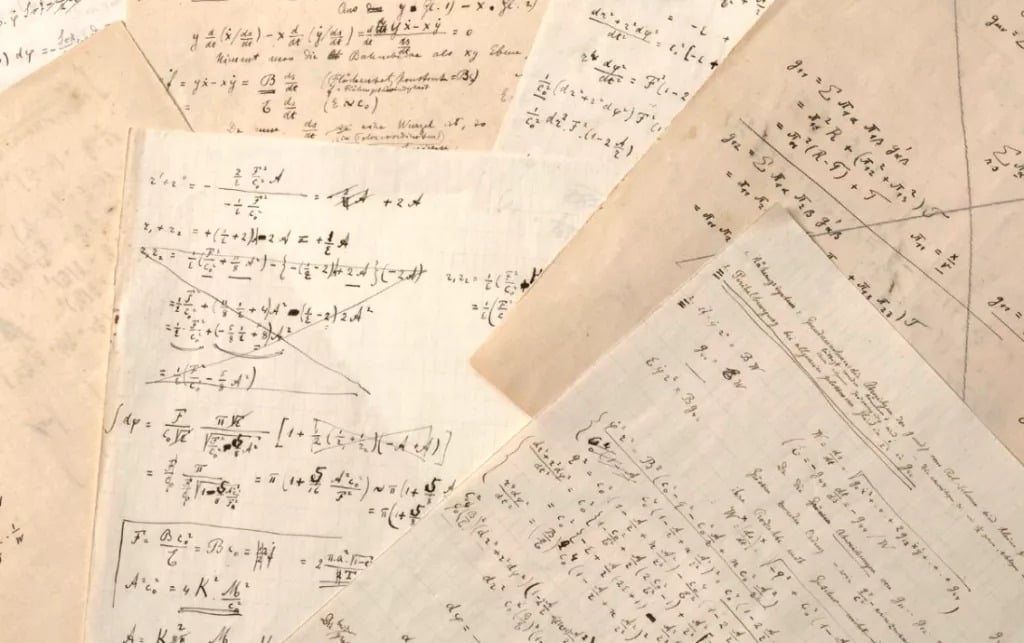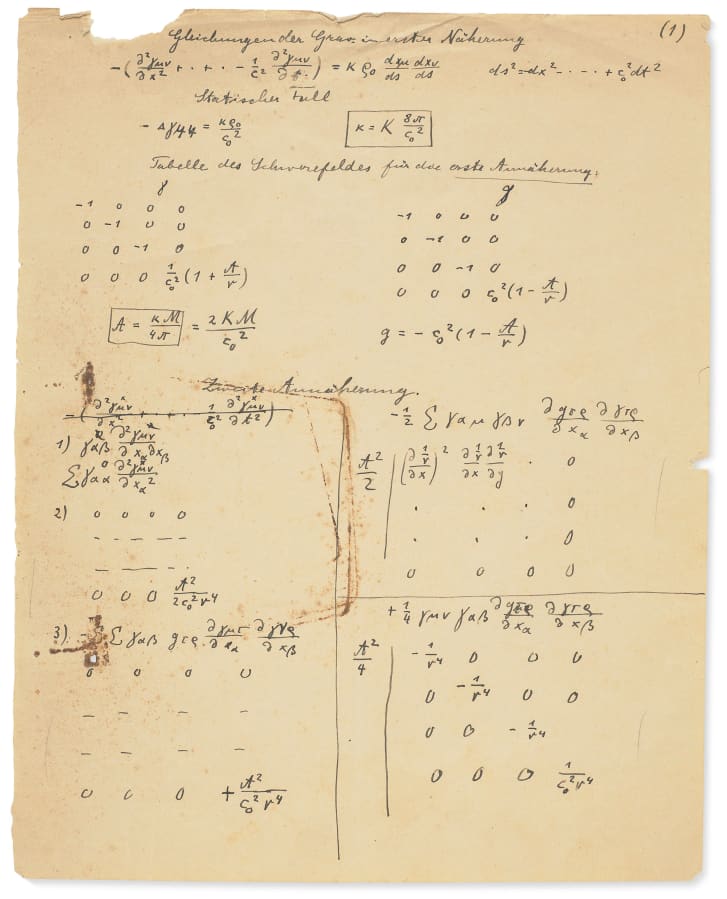
A rare manuscript co-authored by German-American physicist Albert Einstein and Swiss-Italian engineer Michele Besso just became the most expensive autographed scientific paper ever sold. The final price — which added up to more than 13.3 million euros ($15 million) with fees — far exceeded the 3.5 million Euros ($3.9 million) expected by Christie's Auction House Paris office, which hosted the sale.
The handwritten notes, sold to an anonymous buyer on November 23, 2021, contained calculations that became the basis of Einstein's theory of general relativity. It is one of only two drafts of the all-important paper that revolutionized light, speed, matter and energy with a deceptively simple equation. According to Christie's, both drafts were saved by Besso. Einstein saw little value in working documents and rarely kept them.

The 54-page document was a collaboration between the two scientists, with Einstein penning 26 pages and Besso writing 25. Three pages contained entries from both. The calculations proved incorrect, and the work was paused in June 1913 when Besso returned home to Italy. The Swiss engineer attempted to continue working on the theory in 1914 but soon gave up. Einstein revisited it a year later and was finally able to complete the paper. The physicist published the theory of general relativity under only his name in November 1915.
While Einstein's work changed physics forever, he surprisingly did not receive the Nobel Prize for it. That honor was bestowed to him in 1921 for his work in the photoelectric effect, which introduced photons to researchers.
Here is a brief explanation for those unfamiliar with Einstein's groundbreaking discoveries. The theory of relativity refers to two interrelated theories — special relativity, which the scientist proposed and published in 1905, and general relativity, which he completed in 1915. The special theory or relativity proved that mass and energy are interconnected and can be easily converted to one another using the now-famous equation E = mc2 — where E is energy, m is mass, and c is the speed of light. However, it ignored the existence of gravity.
The scientist rectified that with the theory of general relativity. It asserts that gravity is not an invisible force that attracts objects to one another. Instead, it is a curving or warping of space — the bigger the object, the more it warps the space around. For example, our Sun is large enough to curve space across our solar system, causing Earth and the other planets to orbit around it.
Resources: Space.com, LiveScience.com, Phys.org
